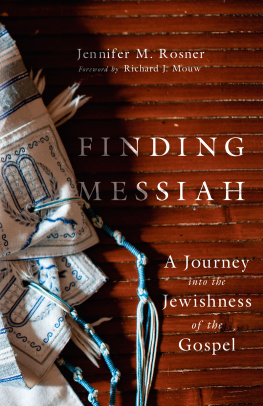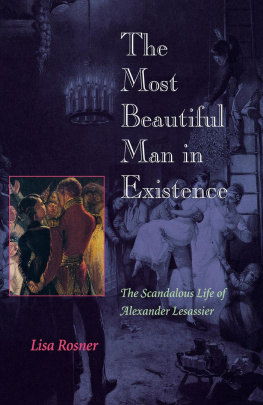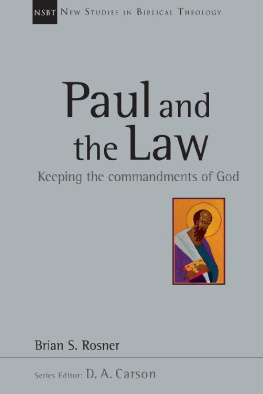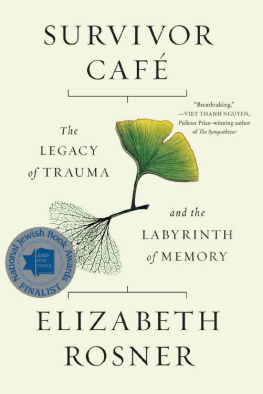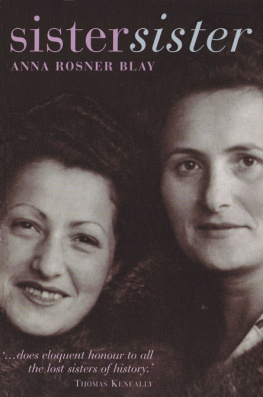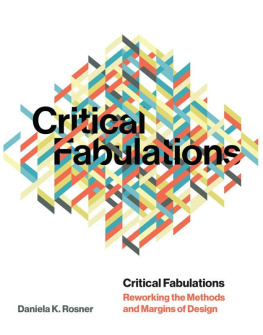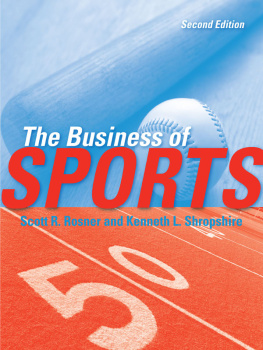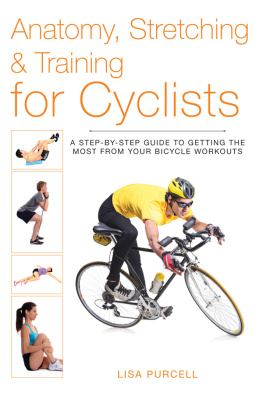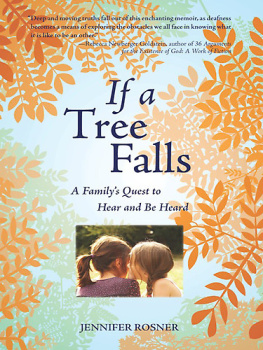Rosner Lisa - The Anatomy Murders
Here you can read online Rosner Lisa - The Anatomy Murders full text of the book (entire story) in english for free. Download pdf and epub, get meaning, cover and reviews about this ebook. year: 2010, publisher: University of Pennsylvania Press, genre: Detective and thriller. Description of the work, (preface) as well as reviews are available. Best literature library LitArk.com created for fans of good reading and offers a wide selection of genres:
Romance novel
Science fiction
Adventure
Detective
Science
History
Home and family
Prose
Art
Politics
Computer
Non-fiction
Religion
Business
Children
Humor
Choose a favorite category and find really read worthwhile books. Enjoy immersion in the world of imagination, feel the emotions of the characters or learn something new for yourself, make an fascinating discovery.

- Book:The Anatomy Murders
- Author:
- Publisher:University of Pennsylvania Press
- Genre:
- Year:2010
- Rating:4 / 5
- Favourites:Add to favourites
- Your mark:
- 80
- 1
- 2
- 3
- 4
- 5
The Anatomy Murders: summary, description and annotation
We offer to read an annotation, description, summary or preface (depends on what the author of the book "The Anatomy Murders" wrote himself). If you haven't found the necessary information about the book — write in the comments, we will try to find it.
The Anatomy Murders — read online for free the complete book (whole text) full work
Below is the text of the book, divided by pages. System saving the place of the last page read, allows you to conveniently read the book "The Anatomy Murders" online for free, without having to search again every time where you left off. Put a bookmark, and you can go to the page where you finished reading at any time.
Font size:
Interval:
Bookmark:
The
Anatomy Murders

Map of Edinburgh, 1830, by John Anderson Junior.
Reproduction by Carson Clark Gallery, Edinburgh.
Being the True and Spectacular
History of Edinburghs Notorious
BURKE AND HARE
and of the
MAN OF SCIENCE
Who Abetted Them in the
Commission of Their Most
HEINOUS CRIMES
Lisa Rosner

Copyright 2010 University of Pennsylvania Press
All rights reserved. Except for brief quotations used for purposes of review or
scholarly citation, none of this book may be reproduced in any form by any
means without written permission from the publisher.
Published by
University of Pennsylvania Press
Philadelphia, Pennsylvania 19104-4112
Printed in the United States of America on acid-free paper
10 9 8 7 6 5 4 3 2
Library of Congress Cataloging-in-Publication Data
Rosner, Lisa
The anatomy murders : being the true and spectacular history of Edinburghs
notorious Burke and Hare, and of the man of science who abetted them in
the commission of their most heinous crimes / Lisa Rosner.
Includes bibliographical references and index.
p. cm.
ISBN: 978-0-8122-4191-4 (alk. paper)
1. Burke, William, 17921829. 2. Hare, William, 1792?1870?
3. MurderScotlandEdinburghCase studies.
4. MurderScotlandEdinburghHistory19th century.
5. Edinburgh (Scotland)History.
HV6535.G6R568 2010
364.152/309224134 22 2009018495
THOUGH NEITHER WAS NATIVE TO THE CITY AND BOTH ARE long gone, William Burke and William Hare remain two of Edinburghs most famous residents. Over a twelve-month period they killed sixteen peoplethree men, twelve women, and one childin a murder spree which ended only with their arrest in November 1828. The motive was profit, for Edinburgh was a major center of medical education, and lecturers would pay high prices for subjects, that is, cadavers for dissection. The means was a form of suffocation. Assisted by Hares wife, Margaret, and Burkes companion, Helen MDougal, the two men enticed their victims to drink to insensibility, then lay on top of them, compressing the chest while holding the mouth and nostrils closed: burking, it came to be called. The crimes were made possible in part by general conditions of the early nineteenth-century city, with its large mobile population and small police force. There were additional contributing circumstances: Margaret Hare ran a lodging house for transients in the busy immigrant district known as the West Port, and Dr. Robert Knox, the up-and-coming anatomist to whom the killers sold the cadavers, asked no questions. Murder is no novel crime, wrote one contemporary journalist, it has been done in the olden time as well as now; but murder perpetrated in such a manner, upon such a system with such an object or intent, and accompanied by such accessory circumstances, was never, we believe, heard of before. Its deep tragical interest made it picturesquely horrifying, and it has retained its hold on the popular imagination ever since. Burke and Hare are famous among true-crime aficionados, forensic experts, and devotees of horror stories. They have been depicted in literature, on stage, and in film. And whenever questions are raised about the lucrative medical transplant industry, or the illicit harvesting of body parts, we are sure to hear the story of Burke and Hare.
These were the first serial killings to capture media attention, sixty years before Jack the Ripper. The early nineteenth century was marked by an enormous expansion in the popular press, and news of horrific murders sold sensationally. Edinburgh newspapers eagerly followed the story, providing daily and even twice-daily reports and commentary. These reports were reprinted and embellished in the periodical press from London, Manchester, and Dublin to New York, Boston, and the Ohio frontier. Fulllength versions followed as soon as publishers could set the type. First off the press was Thomas Irelands West Port Murders, a series of twenty-four-page pamphlets later combined in a single volume. It promised An Authentic and Faithful History of the ATROCIOUS MURDERS COMMITTED BY BURKE AND HIS ASSOCIATES; Containing every authentic particular, and a full Disclosure of all the extraordinary circumstances connected with them... Illustrated by Portraits drawn from Life, and other highly interesting Copperplate Engravings of Plans, Views, &c. Ireland had not quite completed his print run when the publisher and bookseller Robert Buchanan issued his more upmarket book, Trial of William Burke and Helen MDougal. Advertised as the only authentic edition of the trial, it featured sworn testimony from the murderers neighbors and associates as well as a corrected version of the proceedings. Buchanan published two other sets of documents relating to the murders over the next few months, reprinting local newspaper articles and pamphlets not available elsewhere. An avid reading public scooped them up, binding them together with lurid illustrations, broadsheets, and caricatures.
The murders became part of the lore of Edinburgh, a story steeped in the distinctive geography of the city, with its tall gray tenements dispersed over a very irregular surface of ground, wrote Thomas Shepherd in his 1831 collection of engravings, Modern Athens, and placed partly in valleys, and partly on the tops and sloping sides of hills. He compared the High Street, lying on the highest sloping ridge, to the backbone of a herring, with Edinburgh Castle at its head on the west end, and Holyrood Palace on its tail to the east. The ribs were formed by the numerous narrow lanes, called wynds or closes, running steeply down the hillside, and the Hares house in Tanners Close, southwest of the High Street, became notorious as the scene of most of the murders.
Scottish writers have always been drawn to Burke and Hare. Sir Walter Scott followed the affair as avidly as the rest of Edinburgh at the time and discussed it freely with his friends and legal associates. So did John Wilson, the literary force behind Blackwoods Magazine under his pen name of Christopher North. Known for its macabre tales and an important influence on Edgar Allan Poe, Blackwoods made cadavers and body snatchers staples of periodical fiction throughout the nineteenth century. Robert Louis Stevenson drew on the murders in his short story masterpiece The Body Snatcher. The playwright and surgeon James Bridie took up the murders in his 1931 play The Anatomist; more recently, Burke and Hare had a cameo role in Ian Rankins Fleshmarket Close. Modern visitors to Edinburgh will hear many Burke and Hare stories, some of which are even true. The restof cadavers hauled up secret passageways, of beautiful prostitutes dissected by their loversare gruesome and enthralling, easy enough to believe on a foggy November evening, passing under a bridge or climbing a dark stone stair.
The impact of the murders reverberated well outside of Scotland, for they coincided with political developments that ultimately transformed modern Britain. In 1828 the Tory establishment, which held power in Parliament, was under attack by Whig opposition leaders agitating for governmental reform. During precisely the period that Burke and Hare peddled their cadavers, a Whig-led parliamentary committee was investigating the way in which medical schools obtained bodies for dissection. The Select Committee on Anatomy, as it came to be known, made public the dangers inherent in the body trade. Once the murders came to light, committee members seized on Burke and Hare as the true authors of the reforms they proposed. The government, they claimed, was responsible for the crime which it has fostered by its negligence, and even encouraged by a system of forbearance. Radical publishers Cowie and Strange issued
Font size:
Interval:
Bookmark:
Similar books «The Anatomy Murders»
Look at similar books to The Anatomy Murders. We have selected literature similar in name and meaning in the hope of providing readers with more options to find new, interesting, not yet read works.
Discussion, reviews of the book The Anatomy Murders and just readers' own opinions. Leave your comments, write what you think about the work, its meaning or the main characters. Specify what exactly you liked and what you didn't like, and why you think so.

